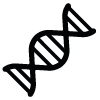|
The selection of pasture/fodder and legumes to be planted depends on:
The most important thing is that you must have an area of land for this purpose. The land can be either owned by you or abandoned lands such as road reserves, LLN and JPT or areas around the livestock shed, etc.
Prior to land preparation works being carried out, the land must be cleared from any plants, tree trunks, wood stumps and others beforehand. Drainage should be made if the area is wet.
There are 3 stages of land preparation, which are: i. Plowing ii. Harrowing/breaking iii. Spinning This work should best be carried out at the beginning of the dry season and at each level must be done properly in gaining the suitable soil structure as well as improving its water holding for root development and further growth.
Lime should only be applied if the acidity (pH) of the soil is low and if the legumes are planted together. The required soil pH value is between 5.0 – 7.0.
Consumption rate depends on the soil pH value analysed. Approximately 2-3 tonnes of lime/hectare or 1 tonne/acre will raise the pH value to 0.5. Liming is performed once the land is prepared or 2 weeks before planting.
Planting is best carried out early during the rainy season for effective germination and growth. Irrigation using irrigators and sprinklers also helps without being too dependent on rain.
There are 2 methods of planting:
The seeds can be sown by hand or by machines such as a ‘seedavator’. The general rate for grass seed is 3-6 kg/hectare and legume seed is 2-5 kg/hectare. In the pasture mix (grass and legume), the legume ratio should not exceed 40%.
That is, using stem sections, trellis/stolon or sapling. This method is carried out on pastures that are flowerless or flowering but cannot germinate such as Napier. Sections can also be planted according to line either by pricking or lying. Sections can also be spread flat and spun into the soil by the passing of a rotovator. Planting using saplings are made when the seeds are unavailable and not of the creeper variety.
It can be carried out a few days before flowering. This situation can be estimated when a small portion of grass on the plot starts flowering.
For ease of management, this can also be based on the resting period between each cutting/grazing, with an average of 4-5 weeks.
Fertilisation is essential in ensuring the yield and quality of pasture/fodder remains constantly high.
A general rate of real grass (not mixed with legume) is N:P:K = 60:30:30, which is 60 kg. Nitrogen/hectare : 30 kg. Phosphorus/ha : 30 kg. Potassium/ha.
If the area is a newly opened land, only phosphate fertilisers should be added to encourage root growth. The Triple Super Phosphate (TSP) fertiliser with a rate of 250 kg/ha is sufficient.
For legume plots or grass mixed with legume, the fertilisation rate is P : K = 30 : 30
Here is a general managed fertilisation rate recommended for a number of managements:
Use of livestock manure and shed washing water is good and highly recommended.
If you have a perfect irrigation system, the rain factor will not cause problems in determining the fertilising period.
|
||||||||||||||||||
Kemaskini pada 2015-10-30 17:00:58 daripada Administrator








.png)


 LAMAN UTAMA
LAMAN UTAMA INFO KORPORAT
INFO KORPORAT PERKHIDMATAN
PERKHIDMATAN LAMAN UTAMA
LAMAN UTAMA Import Eksport
Import Eksport Kawalan Penyakit & Kesihatan Veterinar
Kawalan Penyakit & Kesihatan Veterinar Harga Komoditi
Harga Komoditi Komoditi Ternakan
Komoditi Ternakan Skim Pensijilan DVS
Skim Pensijilan DVS Perkhidmatan Makmal
Perkhidmatan Makmal Pelaburan
Pelaburan Rumah Sembelih
Rumah Sembelih Bahan Biologik & Ubatan Veterinar
Bahan Biologik & Ubatan Veterinar Latihan & Kursus
Latihan & Kursus Penyelidikan
Penyelidikan Kebajikan Haiwan
Kebajikan Haiwan Subsidi Ayam Telur
Subsidi Ayam Telur e-DIGITAL
e-DIGITAL AKTA & PERUNDANGAN
AKTA & PERUNDANGAN HUBUNGI KAMI
HUBUNGI KAMI
